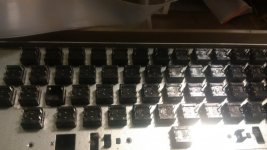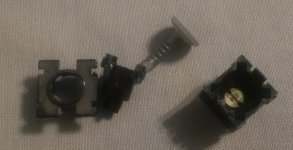Hi!
So, I got this little beauty from the dump a long time ago and its sat on a shelf basically unused. I've just now started to investigate into it.
It has a grand total of 0 floppy drives and 0 hard drives. Literally just the built in basic.
Its dirty and grungy and has a key missing, I'm sure the insides are no cleaner. The reset button is stuck and some of the keys feel like they had Jelly poured into them.
If anyone has any suggestions on how to clean this thing it'd be well appreciated! Plus, at least a floppy drive for the thing would be a welcome addition.
http://puu.sh/kxc3L/20ccc12635.JPG
http://puu.sh/kxc7J/64db2f5524.JPG
http://puu.sh/kxcsp/6c27701a91.JPG
http://puu.sh/kxd01/900f7902eb.JPG
http://puu.sh/kxd5r/17d286d499.JPG
http://puu.sh/kxdbA/32f98376c6.JPG
So, I got this little beauty from the dump a long time ago and its sat on a shelf basically unused. I've just now started to investigate into it.
It has a grand total of 0 floppy drives and 0 hard drives. Literally just the built in basic.
Its dirty and grungy and has a key missing, I'm sure the insides are no cleaner. The reset button is stuck and some of the keys feel like they had Jelly poured into them.
If anyone has any suggestions on how to clean this thing it'd be well appreciated! Plus, at least a floppy drive for the thing would be a welcome addition.
http://puu.sh/kxc3L/20ccc12635.JPG
http://puu.sh/kxc7J/64db2f5524.JPG
http://puu.sh/kxcsp/6c27701a91.JPG
http://puu.sh/kxd01/900f7902eb.JPG
http://puu.sh/kxd5r/17d286d499.JPG
http://puu.sh/kxdbA/32f98376c6.JPG


